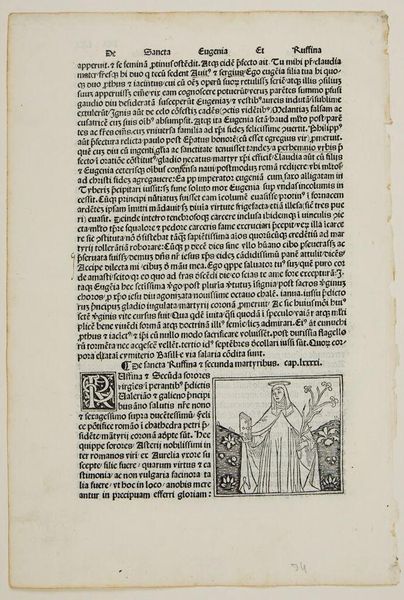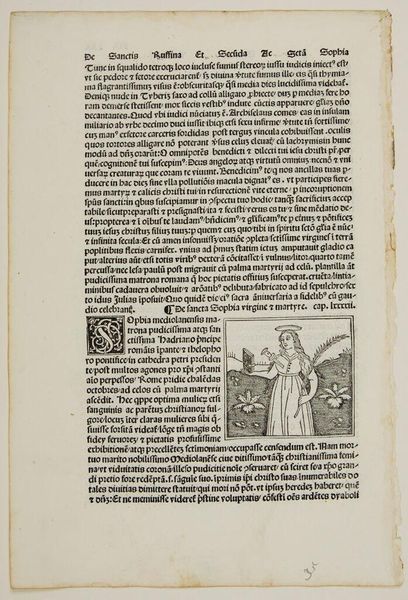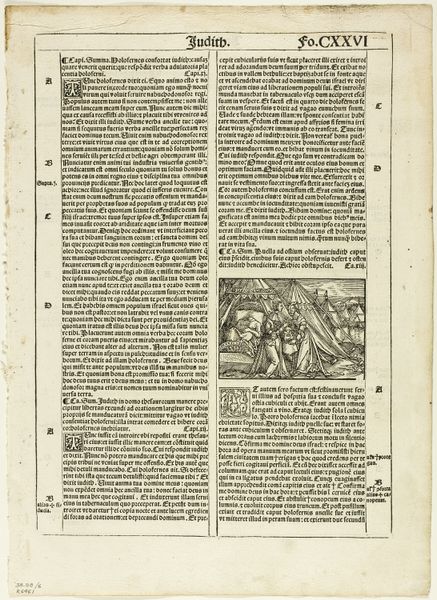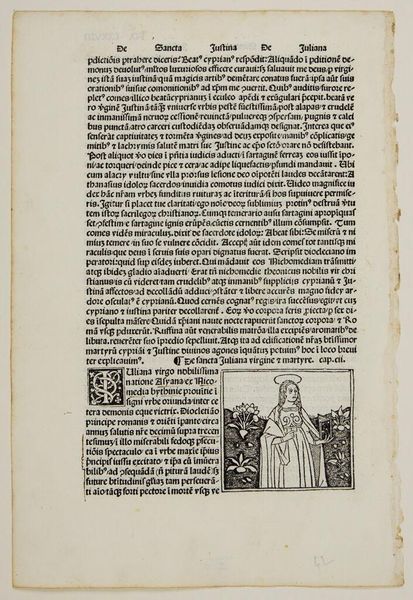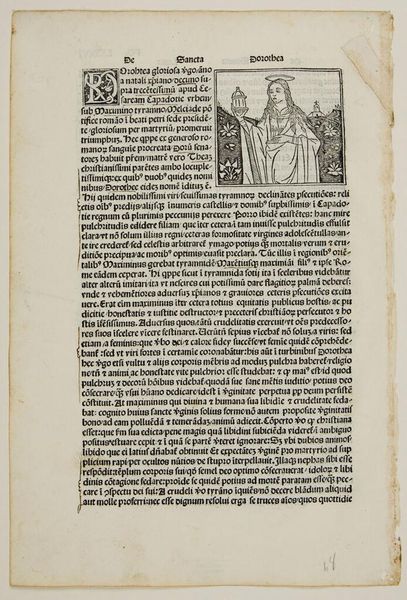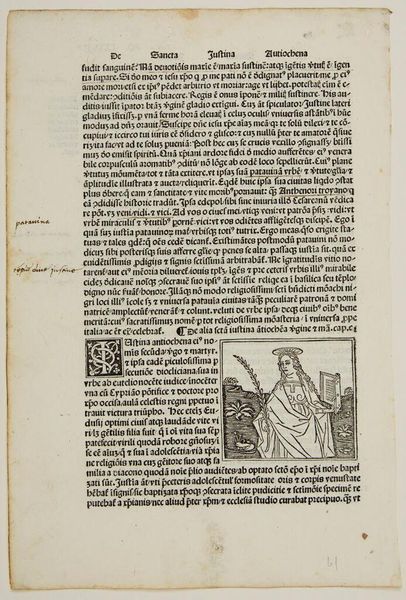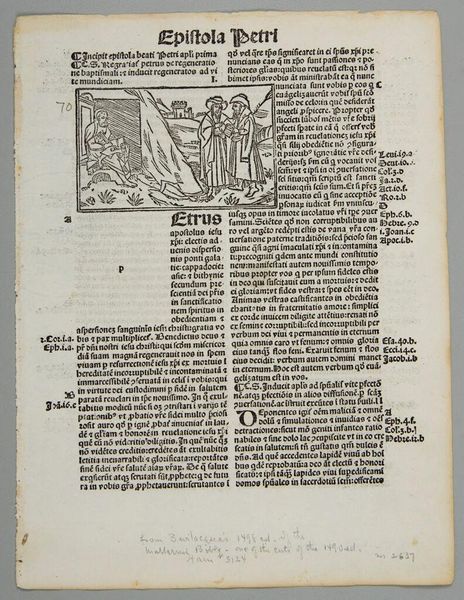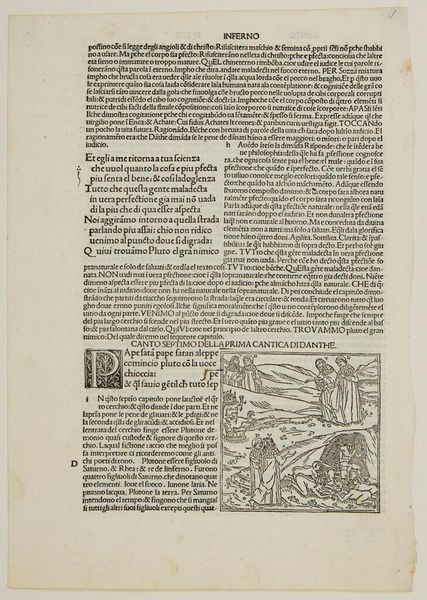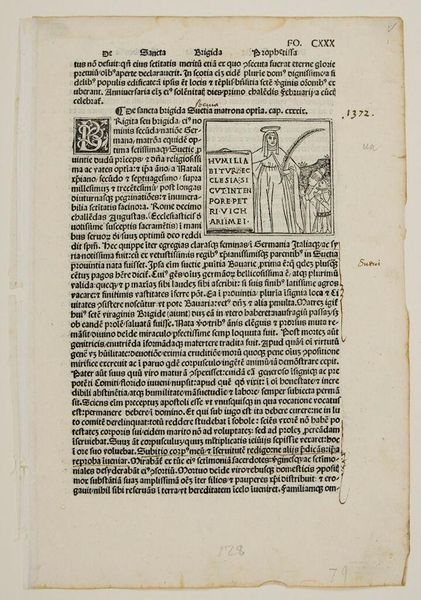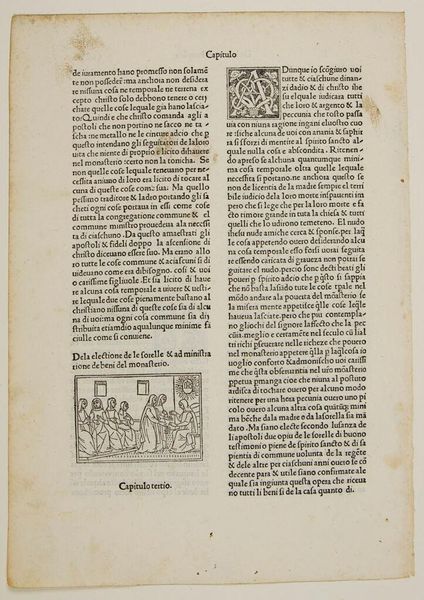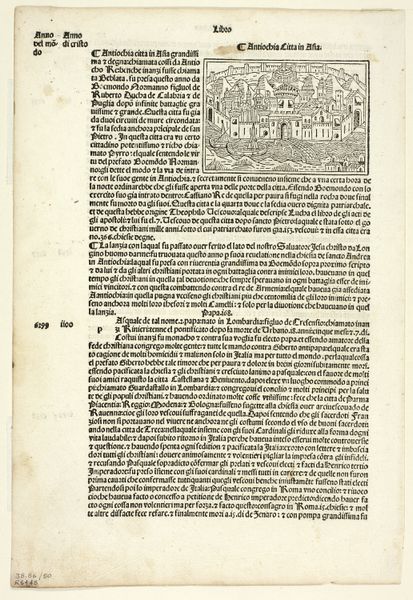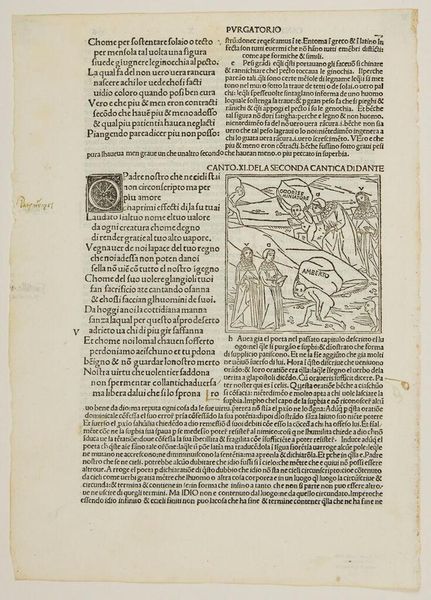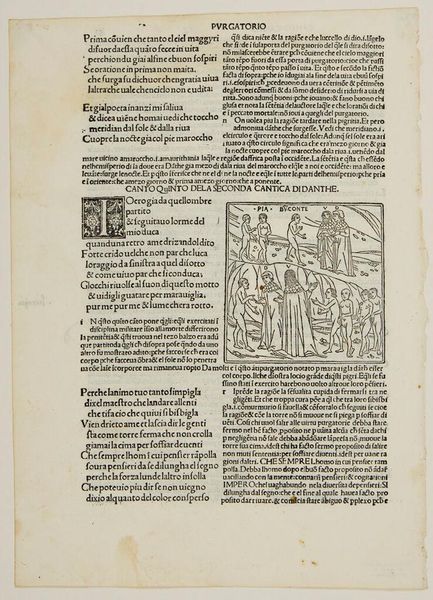
Illustration from Postilla by Parisienses Guillermus, plate 37 from Woodcuts from Books of the XVI Century c. 1514 - 1937
0:00
0:00
drawing, print, paper, typography, woodcut
#
drawing
#
parchment
# print
#
old engraving style
#
paper
#
typography
#
woodcut
#
northern-renaissance
#
historical font
Dimensions: 43 × 32 mm (image); 170 × 110 mm (image/text); 215 × 157 mm (sheet)
Copyright: Public Domain
Editor: This is "Illustration from Postilla by Parisienses Guillermus, plate 37 from Woodcuts from Books of the XVI Century," created around 1514, but the print dates to 1937. Urs Graf is the artist, and it's currently at the Art Institute of Chicago. It’s quite text-heavy, but my eye is drawn to that central image. It seems almost like a little stage, doesn't it? What strikes you when you look at this piece? Curator: I see layers of meaning embedded in the iconography, echoing through time. The woodcut itself is a symbolic form. In a time before mass media, disseminating images widely like this had immense power, shaping collective understanding and memory. Editor: Could you elaborate on that? What sort of understanding were they trying to shape? Curator: Well, consider the image's narrative – figures clustered, possibly debating or witnessing something. Look at their gestures; do you see how the figures' hands speak volumes? These gestures aren't just realistic depictions; they're visual cues laden with established meanings from the period. Editor: So the gestures are symbolic. How would someone at the time have interpreted that? Curator: The viewer, accustomed to biblical scenes and societal hierarchy, might recognize instantly the roles of each person. Note how certain characters appear to be instructing the figure at the center, or reacting to something happening off-screen. These implied power dynamics, when combined with text and context, act as instruction. Do you notice the positioning of figures relating to light and shadow, creating depth and importance? Editor: Yes, I see how that adds another layer. It’s fascinating how much is communicated through the arrangement of the figures alone! Curator: Precisely! These early prints offer insight into cultural values and spiritual beliefs of that era, reflecting on continuity and cultural memory conveyed via images. I’ve always been curious about their understanding of space, body language and meaning… I keep studying them for hints!
Comments
No comments
Be the first to comment and join the conversation on the ultimate creative platform.

